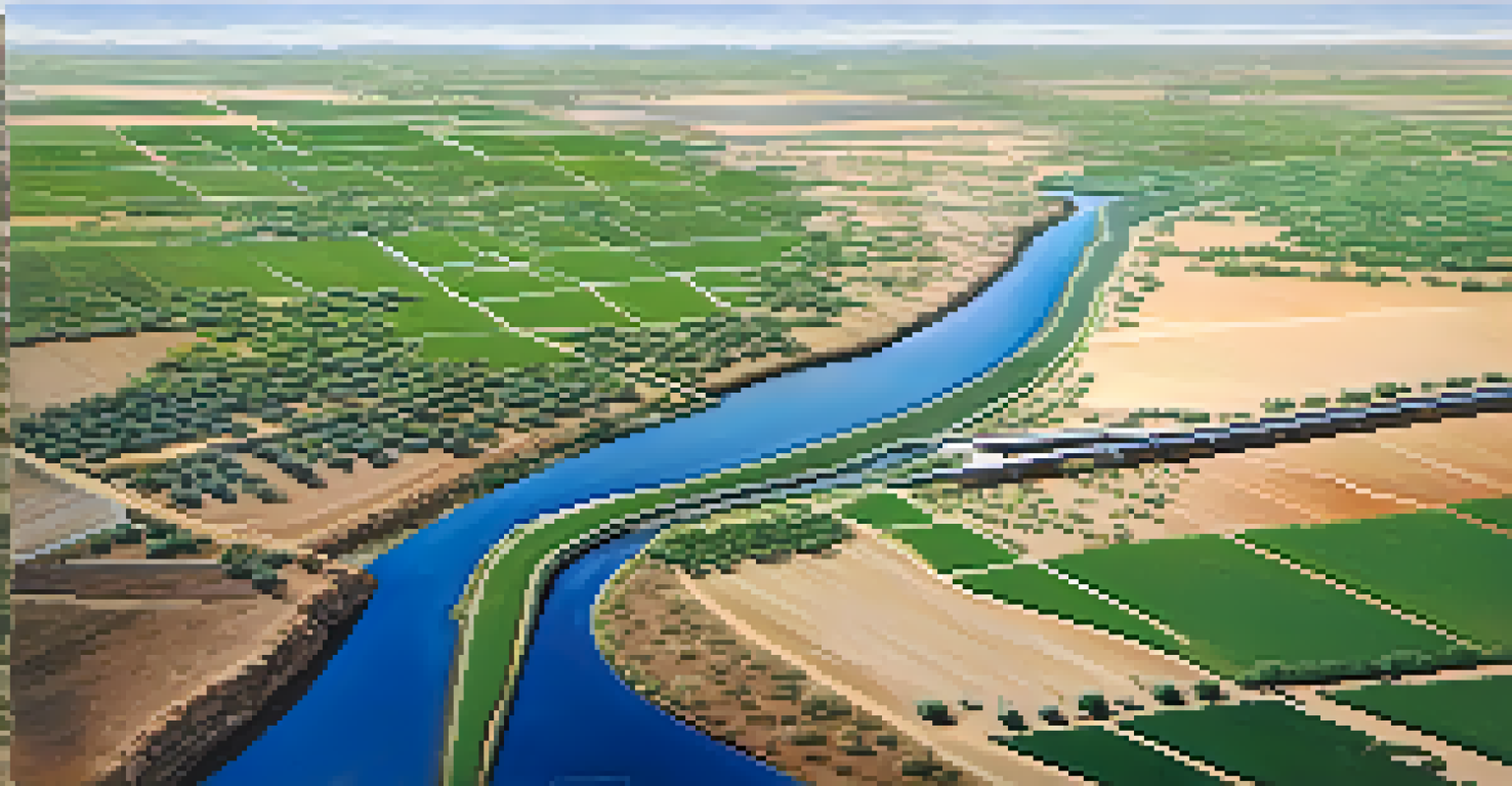The Evolution of Water Rights in Arizona's History

Understanding Water Rights: A Brief Overview
Water rights refer to the legal entitlements to use water from a specific source. In the context of Arizona, these rights have evolved significantly due to the state's unique climate and geography. The principle of 'prior appropriation' is central here, meaning that the first person to use the water for beneficial purposes has the right to continue using it.
Water is the source of life, and it must be managed carefully to ensure that it is available for future generations.
For example, farmers in Arizona often rely on these rights to sustain their crops, particularly in the arid regions. This system contrasts with the riparian rights common in wetter states, where landowners next to a water source can use the water. Understanding these basics is crucial as we explore the historical context of water rights in Arizona.
As we delve deeper, it becomes clear that water rights are not just a legal matter; they intertwine with culture, economy, and the environment in Arizona's history.
Indigenous Water Rights Before Statehood
Before Arizona became a state in 1912, Native American tribes had established their own systems of water rights. The Hohokam people, for instance, developed intricate irrigation systems that allowed them to farm in the desert. Their understanding of water management was sophisticated, reflecting a deep connection to the land.

These indigenous practices laid the groundwork for modern water rights discussions. Tribes like the Navajo and Apache have fought to protect their water sources, emphasizing the importance of water to their cultural identity. This historical perspective is essential to understand the ongoing challenges and negotiations surrounding water rights today.
Water Rights Shape Arizona's Identity
The evolution of water rights in Arizona reflects a complex interplay between legal frameworks, cultural practices, and environmental challenges.
As we move forward, the impact of these ancient practices on contemporary water law becomes increasingly apparent.
The Colorado River Compact of 1922
One of the pivotal moments in Arizona's water rights history was the Colorado River Compact established in 1922. This agreement divided the waters of the Colorado River among seven states, including Arizona, California, and Nevada. It aimed to allocate water resources in a way that would promote stability and cooperation among the states.
In Arizona, water is not just a resource; it's a foundation of our culture, economy, and environment.
However, Arizona's allocation was less than what it desired, leading to ongoing disputes. For instance, California's larger claim to the river's water sparked tensions that still resonate today. This compact not only shaped water rights in Arizona but also set the stage for future legal battles over water usage.
Understanding the implications of this compact helps illuminate the complexities of water management in the region.
The Creation of the Central Arizona Project (CAP)
In response to the growing water demands in the 1970s, the Central Arizona Project (CAP) was established to transport Colorado River water to central and southern Arizona. This massive canal project was designed to secure a reliable water supply for urban areas like Phoenix and Tucson, which were expanding rapidly.
The CAP is a prime example of human ingenuity in managing water resources, but it also brought about new challenges. Many farmers were concerned about how the project would impact their water rights and access. This conflict highlighted the ongoing tension between urban growth and agricultural needs in Arizona.
Indigenous Rights Influence Modern Laws
Historical water management practices by Native American tribes have significantly influenced contemporary water rights discussions and legal disputes.
As we look at the CAP's impact, it's clear that it played a crucial role in shaping the landscape of water rights in Arizona.
Legal Disputes: The Role of the Courts
Legal disputes over water rights have become a common theme in Arizona's history. Courts have often been called upon to interpret the complex web of laws governing water use, leading to landmark rulings that have shaped the landscape of water rights. For example, the 1931 case of 'Arizona v. California' clarified some of the state's entitlements under the Colorado River Compact.
These legal battles are not just about water; they reflect deeper issues of governance, equity, and sustainability. For instance, the rights of Native American tribes versus those of agricultural users have often been at the forefront of these disputes. The outcomes of these cases have lasting implications for how water is managed and allocated.
Understanding the role of the courts in shaping water rights helps illustrate the ongoing struggle for equitable access to this vital resource.
Modern Challenges: Drought and Climate Change
Today, Arizona faces unprecedented challenges regarding water rights due to drought and climate change. With longer dry spells and decreasing snowpack in the Rockies, the Colorado River's flow has diminished significantly. This reality forces stakeholders to rethink how water is allocated and used in the state.
Agricultural, urban, and environmental needs are often at odds, leading to tough negotiations and decisions. For example, farmers may need to reduce their water usage to accommodate the growing cities, creating tension among different groups. This scenario underscores the complexity of modern water management.
Drought Demands Innovative Solutions
As Arizona faces water scarcity due to drought and climate change, collaboration among stakeholders is essential to develop sustainable water management strategies.
As we tackle these challenges, it's crucial to find innovative solutions that balance the needs of all stakeholders while preserving vital water resources.
The Future of Water Rights in Arizona
Looking ahead, the future of water rights in Arizona is uncertain but ripe with opportunity for innovation. The state is exploring various strategies, such as water conservation initiatives and reallocation processes, to address the growing demands. For instance, urban areas are investing in technologies to recycle wastewater and reduce consumption.
Moreover, collaboration among various stakeholders—including farmers, urban planners, and indigenous tribes—will be essential in shaping sustainable water policies. This cooperative approach can lead to more equitable solutions that respect historical rights while accommodating modern needs. As we consider the future, it's apparent that adaptability will be key.

In conclusion, the evolution of water rights in Arizona highlights a rich history of conflict, cooperation, and innovation. The journey continues as the state navigates the complexities of water management in a changing climate.